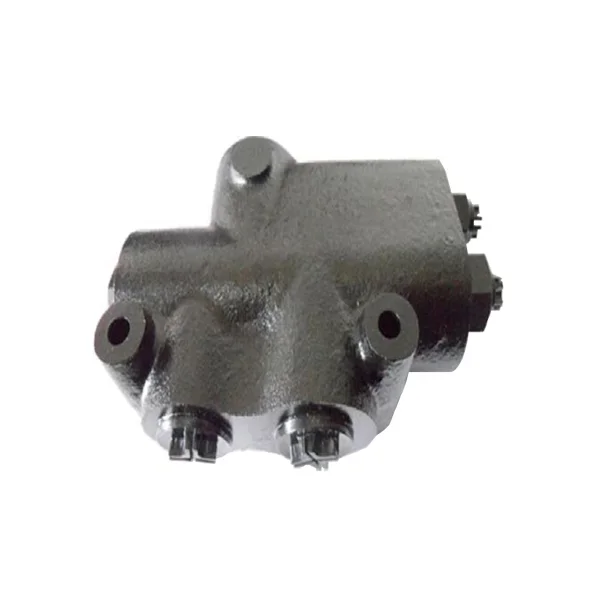In the world of fluid power systems, the hydraulic priority valve plays a crucial role in ensuring efficient and safe operation. This valve, also known as a flow divider or flow regulator, is responsible for controlling the flow and pressure of hydraulic fluid in various applications. In this blog, we will explore the importance of hydraulic priority valves, their functionality, and their applications in different industries.
Understanding Hydraulic Priority Valves
Definition and Purpose:
A hydraulic priority valve is a device that regulates the flow and pressure of hydraulic fluid in a fluid power system. Its purpose is to ensure that the hydraulic system operates smoothly and efficiently by dividing the flow and regulating the pressure according to the system's demands. By maintaining proper flow and pressure, the hydraulic priority valve prevents overloading and damage to hydraulic components.
Components and Operation:
A hydraulic priority valve consists of several main components, including a valve body, spool, and control mechanism. The valve body houses the spool, which is responsible for controlling the flow and pressure of hydraulic fluid. The control mechanism, which can be manual or automatic, adjusts the position of the spool based on the system's requirements.
The operation of a hydraulic priority valve involves the regulation of flow and pressure. When hydraulic fluid enters the valve, it encounters the spool, which divides the flow into multiple outlets. Each outlet supplies hydraulic fluid to different components or cylinders in the system. The valve adjusts the position of the spool to control the flow distribution and ensure that each outlet receives the required amount of fluid.

Functionality of Hydraulic Priority Valves
Flow Division:
One of the primary functions of a hydraulic priority valve is to divide the flow of hydraulic fluid. In systems with multiple cylinders or components, it is essential to distribute the flow evenly to ensure balanced operation. The hydraulic priority valve achieves this by proportionally dividing the flow among the outlets based on the system's demands. This ensures that each cylinder or component receives an adequate amount of fluid, preventing uneven operation and potential damage.
Pressure Regulation:
In addition to flow division, hydraulic priority valves also regulate the pressure within the system. By adjusting the position of the spool, the valve controls the pressure at each outlet. This is crucial for maintaining optimal pressure levels and preventing overloading of hydraulic components. The valve ensures that the pressure remains within safe limits, enhancing the overall performance and longevity of the system.
Applications of Hydraulic Priority Valves
Construction and Heavy Machinery:
Hydraulic priority valves are extensively used in construction and heavy machinery, such as excavators, loaders, and cranes. These machines rely on hydraulic systems for various functions, including lifting, digging, and moving heavy loads. The hydraulic priority valve ensures smooth and controlled operation by dividing the flow and regulating the pressure. This enhances safety, efficiency, and precision in construction applications.
Agricultural Equipment:
In the agricultural industry, hydraulic priority valves play a vital role in tractors, harvesters, and sprayers. These machines utilize hydraulic systems for tasks such as lifting and lowering implements, controlling steering, and operating attachments. Hydraulic priority valves enable precise control of hydraulic functions, ensuring accurate and efficient operation. They improve productivity, reduce operator fatigue, and contribute to the overall performance of agricultural equipment.
Industrial Automation:
Hydraulic priority valves are also widely used in industrial automation systems. These systems often involve complex movements and require precise control. By integrating hydraulic priority valves, manufacturers can achieve synchronized movement and accurate control of hydraulic functions. This enhances productivity, reliability, and safety in industrial applications such as robotics, material handling, and assembly lines.

How to Select the Right Hydraulic Priority Valve
Factors to Consider:
When selecting a hydraulic priority valve, several factors need to be considered. These include the flow and pressure requirements of the hydraulic system, compatibility with other system components, and environmental conditions. It is crucial to choose a valve that can handle the specific flow and pressure demands of the system while ensuring compatibility with other components. Additionally, the valve should be suitable for the environmental conditions in which it will operate.
Types of Hydraulic Priority Valves:
There are different types of hydraulic priority valves available, each with its advantages and disadvantages. Some common types include spool-type priority valves, pressure-compensated priority valves, and load-sensing priority valves. The choice of valve depends on the specific application and system requirements. It is essential to understand the characteristics and functionalities of each type to make an informed decision.

Conclusion
Hydraulic priority valves play a vital role in maintaining the optimal flow and pressure of hydraulic fluid in various fluid power systems. Their ability to divide flow and regulate pressure ensures smooth and controlled operation, enhancing efficiency and safety in industries such as construction, agriculture, and industrial automation. By understanding the functionality and applications of hydraulic priority valves, one can make informed decisions when selecting the right valve for their specific needs.
What Factors Should You Consider When Selecting Hydraulic Valves for Your System


